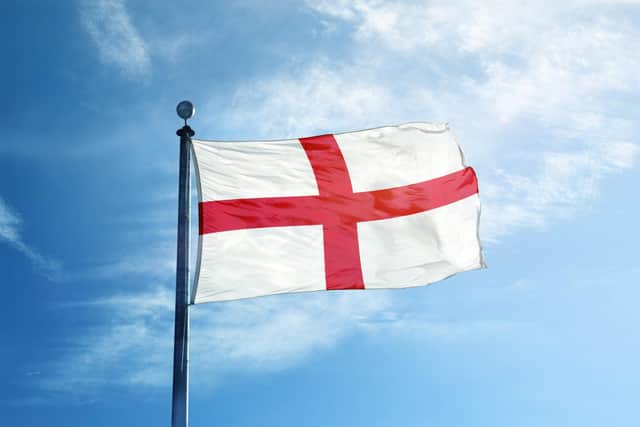St. George’s Day 2021: when is England’s national day, what are its origins - and patron saint's flag explained
and live on Freeview channel 276
Every year England s patron saint, St. George, is remembered on the anniversary of his death.
Once celebrated as widely as Christmas, its observance has waned in recent times but Saint George’s symbol is still recognised as England’s national flag.
Advertisement
Hide AdAdvertisement
Hide AdThe St. George’s cross - a red cross on a white background - forms part of the Union Flag, which brings together England, Scotland, Wales and Northern Ireland.


Many people still observe the day by displaying England’s national flag.
Here’s when it takes place in 2021.
When is St. George’s Day?
In 2021, St. George’s Day is observed on Friday 23 April - the anniversary of his death.
St. George’s Day is scheduled to be observed on Monday 25 April in 2022. It is celebrated on a weekday if the 23 April date falls on a Sunday close to Easter.
What are the origins of St. George’s Day?
Advertisement
Hide AdAdvertisement
Hide AdAccording to legend, Saint George was a soldier in the Roman army who rose to popularity during the Crusades and killed a dragon and saved a princess.
He was executed for his Christianity by the Roman Empire in 303AD.
The earliest mention of St. George derives from a monk scripture titled Bede in 735AD. The feast of St. George is also mentioned in the Durham Collectar.
King Edward III bestowed the position of patron saint of the Order of the Garter, a knighthood for chivalry, to St. George in 1348 for his supposed intervention at the Battle of Crecy.
Advertisement
Hide AdAdvertisement
Hide AdA chapel was built at Windsor Castle and a church in Fordington, Dorset, was named after him.
What happens on St. George’s Day?
St. George’s Day is no longer a public holiday - and hasn’t been for some time.
Schools, banks, shops, post offices, and other businesses have remained open in previous years, while public transport operates at a normal timetable service.
It has been a good excuse for people to head to the pub for a drink or hold family gatherings in the past, though it is likely to have a very different look and feel in 2021.
Advertisement
Hide AdAdvertisement
Hide AdCovid restrictions have eased to allow outdoor hospitality, such as pub beer gardens and outside seating at restaurants, under the government’s roadmap.
While all shops, gyms, swimming pools, hairdressers and libraries can reopen, along with outdoor venues such as zoos and theme parks have reopened from 12 April.
The Rule of Six - which allows up to six people or two households to meet outside - as well as a ‘stay local’ message came into effect from 29 March.
Why is St. George’s Day celebrated?
Since the mid-1990s St. George’s Day has experienced a revival, helped by thousands of flags being waved at England football matches at the 1996 European Championships.
Advertisement
Hide AdAdvertisement
Hide AdEuro ‘96, held in England, saw the national team reach the semi-final stage in what is fondly looked back upon by supporters as a championships which grabbed the population’s attention.
The red cross of St. George is now widely used at sporting events, flown by churches, local authorities and other organisations as a sign of patriotism and a symbol of national pride.